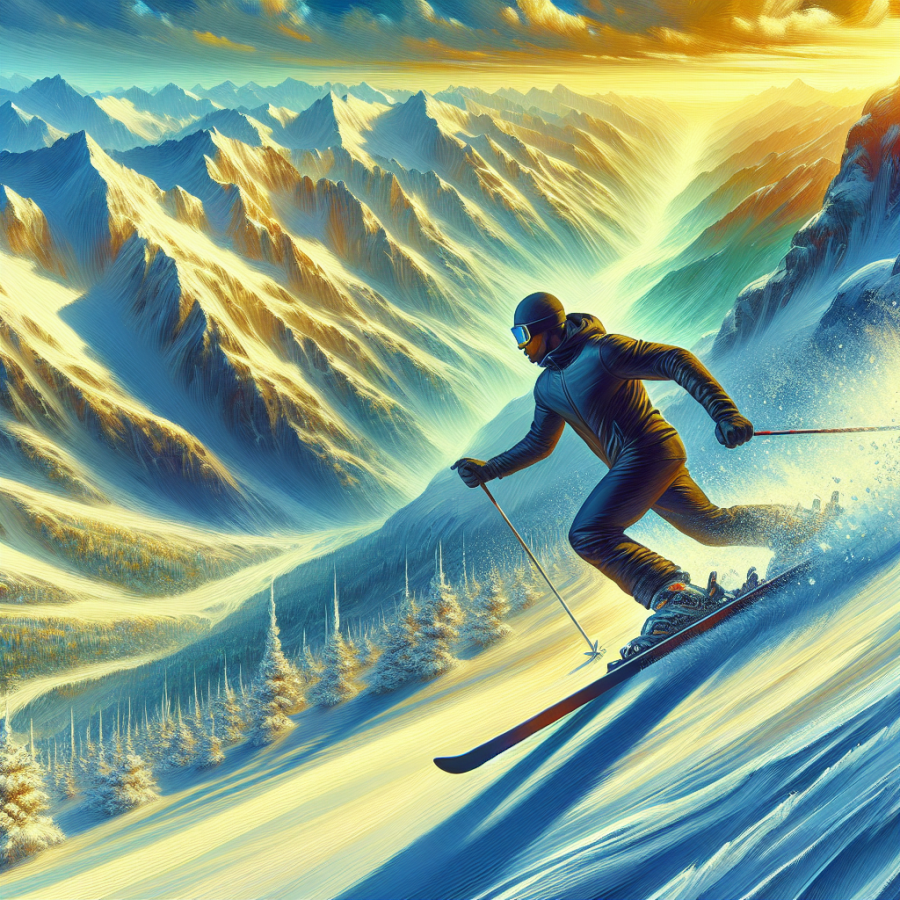Advanced Techniques: Taking Your Skiing to the Next Level
As you build upon the foundational skills of skiing and grow more comfortable on the slopes, your desire to push your abilities and conquer more challenging terrain is natural. This desire leads many enthusiasts to explore advanced techniques to elevate their skiing prowess.
**Carving Turns: Precision and Edge Control**
Mastering the art of carving is pivotal when taking your skiing to the next level. Unlike skidding or sliding turns, carving is about maintaining constant contact with the snow, allowing your skis to bend and create an arc. This technique generates cleaner, more precise turns with less friction, resulting in a smoother and faster ride. To perfect carving, you need to concentrate on knee and ankle flexion while rolling your knees into the turn. The aim is to use the entire edge of the ski to cut into the snow, providing greater control and stability.
**Short Turns: Agility and Speed Management**
Advanced skiers use short turns not just to navigate steep terrain, but to regulate their speed with agility and precision. Short turns require quick weight transfers and sharp, rhythmic movements. The key is maintaining a consistent pole plant to help rhythm and balance, while flexing and extending your legs to absorb variations in the terrain. Your body should be facing downhill with your shoulders level to the slope, promoting quick pivoting of the skis.
**Mogul Techniques: Bumps and Rhythm**
Moguls offer a unique challenge, and proficient mogul skiing demands a distinct skill set. When approaching moguls, stay centered and keep your hands forward. Your knees and hips should act as shock absorbers, flexing and extending to adapt to the bumps. Advanced mogul techniques also involve choosing the right line. You can either take a direct line over the tops of the moguls, an around-the-mogul line, or a combination of both, depending on the terrain and your comfort level.
**Powder Skiing: Float and Balance**
Skiing in powder, with its sensation of floating, is an exhilarating experience that advanced skiers seek out. Powder skiing requires a balanced stance with a slight lean back to keep the ski tips up. You’ll want to use a wider stance to stay stable and make gentle, rounded turns. Pole planting is less important in soft snow, but you should still use your poles for balance. The key is to maintain momentum and use the snow's resistance to help turn.
Read also:
Mastering the Buzz: Tips for Conquering the Wire Loop Game
Fine-Tuning Your Stance: The Foundation of Expert Skiing
Fine-tuning your stance is a crucial aspect of expert skiing that is often overlooked by both new and seasoned skiers. A proper stance is the bedrock upon which all ski techniques are built, as it directly influences balance, control, and the ability to react to the terrain. To conquer the slopes with finesse, focusing on the subtle details of your foundation can yield significant improvements.
First and foremost, the athletic stance is the starting point for expert skiing. This position is akin to being ready to catch a ball or start a foot race, with knees bent and weight centered over your ski boots. Keeping your feet about shoulder-width apart will provide a stable base, while also allowing for dynamic movement as the terrain changes under your skis.
The flex in your ankles, knees, and hips is essential for absorbing variations in the snow surface. Visualize your joints as springs, compressing and extending in response to bumps and dips. This does not mean exaggerated movements, but rather small, responsive adjustments that maintain contact between your skis and the snow. Staying too rigid will take away the fluidity needed for expert skiing.
Proper upper body positioning complements a well-adjusted lower body stance. Your torso should remain mostly upright, with a slight forward lean originating at the ankles—not at the waist. Leaning too far back or bending at the waist are common mistakes that can throw off balance and reduce control. Instead, aim for a quiet upper body with shoulders parallel to the slope, arms forward, and hands in your peripheral vision to promote fore-aft balance.
Edge control is another element closely tied to stance. Expert skiers understand how to roll their knees and ankles into the turn, utilizing the edges of their skis for carving precise turns. The distribution of weight from one ski to the other is subtle and requires a finely tuned stance that facilitates these micro-adjustments. Practice on gentle terrain to develop muscle memory for these movements, progressively increasing the difficulty of the slopes as you gain confidence and skill.
Lastly, your stance should be adaptable. Different types of terrain and snow conditions will call for adjustments. It's crucial to maintain the agility to respond to these changes. For instance, skiing in moguls may require quicker, more pronounced flexing and extending of your legs compared to a groomed run. Similarly, powder skiing might necessitate a slightly wider stance for increased stability.
In summary, mastering your stance is like building a strong foundation for a house; everything else depends on it.




